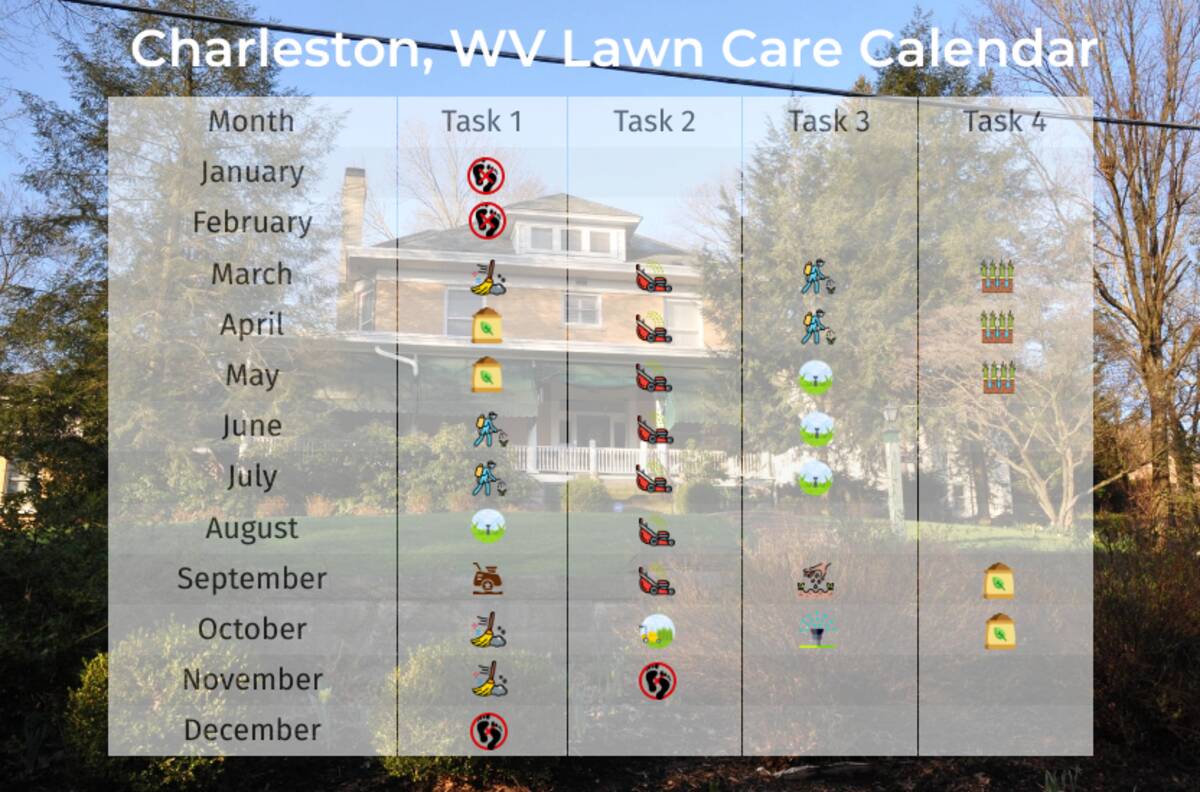
Watering at the right time, good mowing practices and seasonal fertilizing are some good lawn care tips for Charleston to keep your grass green and healthy.
But there’s a little more to it than just setting up a sprinkler and running the mower on a Saturday morning. Weather patterns, soil composition, and local weeds all play a part in your lawn’s health. Let’s explore how you can handle these variables and efficiently manage your lawn care routine.
Charleston Lawn Care: A Month-to-Month Guide at a Glance
Spring Lawn Care in Charleston: March to May
Spring is, first and foremost, all about cleaning up after the remnants of winter. Here are the first steps to proper spring lawn care in Charleston:
Raking — Late March through April
Charleston’s climate can stay quite cold through March and into April, but once the winter snow has finally melted and temperatures start to climb consistently above 50 degrees Fahrenheit, it’s time to reach for your thatch rake or a solid leaf rake. This basic tool helps eliminate dead grass and leaves left behind after the cold season.
The collection of dead and living organic matter between the grass and soil is known as thatch, and if it gets too thick (1/2 an inch or more), you’re going to have problems. Thatch can prevent the much-needed airflow, sunlight, and moisture from reaching the soil surface.
First Mow of the Season — Late March to Early April
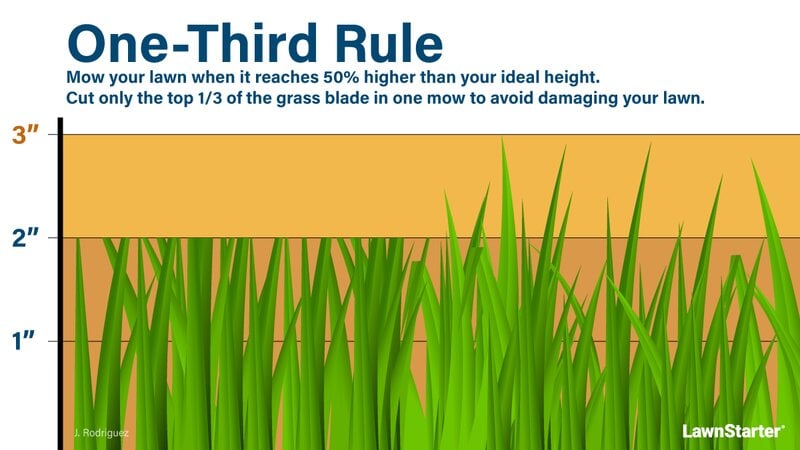
After your lawn has had a good raking, it’s time for the first mowing session of spring. Your grass is pretty much hibernating over winter, and by late March to early April, it wakes up and starts to grow again.
Try not to go too short on your first cut since cooler spring nights can still frost over. A height of about 2.5 to 3 inches should be a safe bet at this point. Always remember the golden rule of mowing: Never remove more than a third of the grass blade at once, as this can stress your lawn and make it more susceptible to pests and diseases.
Pre-Emergent Herbicide Application — March to April
To prevent the growth of weeds on your lawn, you can apply a pre-emergent herbicide. Pre-emergent simply means it stops weeds from sprouting above the ground and should be applied when the soil temperature reaches 50 to 55 degrees constantly for several consecutive days.
This stops crabgrass and other invasive weed seedlings from becoming established just as the growing season begins. Remember that this is a preventative measure, and it won’t kill any existing weeds.
Fertilization — April to May

Taking advantage of the active growth phase, a sprinkle of fertilizer from April to May can really kickstart your grass for the upcoming summer season. If you sidestepped fall fertilization or if your lawn is looking slightly unhealthy or yellowish after West Virginia’s frosty winter, some fertilization might be necessary.
Opt for slow-release fertilizer that will last longer and dole out nutrition over an extended period to make sure you’re not overfeeding it in one go. Over-fertilizing is one thing we need to watch: As tempting as it may sound to get rapid results, excess fertilizer could lead to fertilizer burn along with other issues.
Note: Remember that East Coast soils tend to be acidic, so don’t forget to take a soil test before fertilizing in case your lawn needs lime as well as fertilizer. This is the ideal period to lime warm-season lawns.
Aeration — March to May
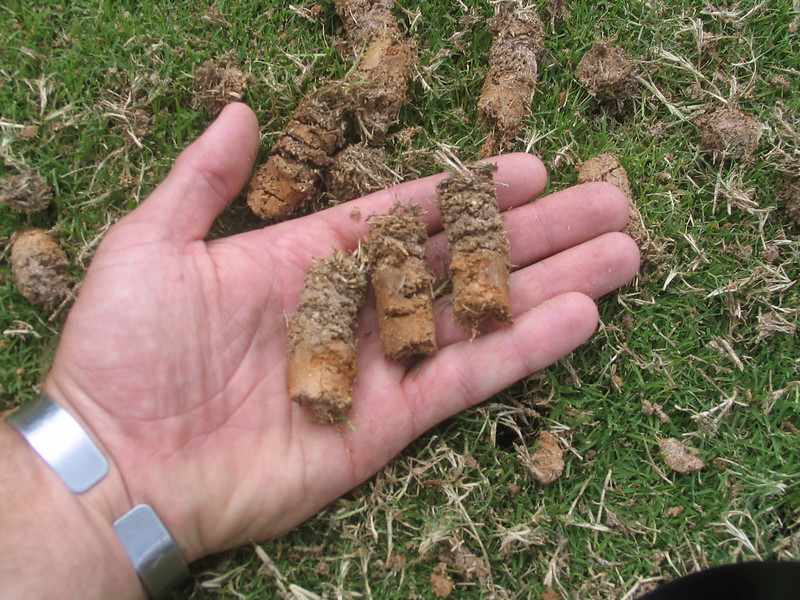
You’ve probably noticed that after winter, your lawn doesn’t exactly look like it’s in prime condition, and, in fact, it might be looking a bit suffocated. Throughout the harsh cold season and further impacted by snow activities (yes, those intense snowball fights count), soil can get packed down, which minimizes its ability to breathe and absorb vital nutrients.
You can rent an aerator from your local hardware store or hire a pro to take care of it. If you prefer a hands-on approach or have trouble renting an aerator, you could use a garden fork instead. The goal here with a garden fork is to punch holes throughout your lawn, allowing air circulation to rejuvenate and kick-start healthy growth.
Summer Lawn Care: June to August
Summer hits Charleston with a splash, signaling the need for sunscreen, barbecues…and enthusiastic lawn care. Your grass needs you now more than ever.
Continue Mowing — All Summer
During these hot months, you should mow at least once per week. Your lawn mower blades should be set higher compared to spring as taller grass shades the soil, which prevents weed growth and promotes deeper roots.
Mow the lawn to 3 to 4 inches to help protect the roots from heat and reduce water loss. Here’s a table of Charleston West Virginia’s grass types to guide you on the best mowing heights:
| Grass Type | Recommended Mowing Height | Recommended Mowing Frequency |
| Tall Fescue | 2 inches | 5 – 7 days |
| Fine Fescue | 2.5 – 4 inches | 7 – 14 days |
| Kentucky Bluegrass | 1.5 – 2.5 inches | 5 – 7 days |
| Perennial Ryegrass | 1.5 – 2.5 inches | 5 – 7 days |
| Bermudagrass (common) | 1.5 – 2.5 inches | 3 – 5 days |
| Zoysiagrass | 1 – 2 inches | 5 – 7 days |
Post-Emergent Herbicide Application — Late May to July
After applying your pre-emergent herbicide in spring, it’s time for round two. This is where a post-emergent herbicide can be used to eradicate any remaining weeds that survived and managed to sprout.
According to the West Virginia University Extension Service, the best time to apply post-emergent herbicides is when weeds are actively growing but still small and young. This makes late May to July ideal for Charleston lawns.
Here are a few tips for applying post-emergent herbicides to your lawn:
- Broadleaf weeds: Apply a three-way herbicide containing 2,4-D, dicamba, and mecoprop from May to July.
- Crabgrass and other annual grasses: Apply a post-emergent herbicide in late May, ideally in combination with a pre-emergent applied in April.
- Dallisgrass and perennial grasses: Apply a post-emergent grass herbicide 2 to 3 times, with applications spaced 14 to 21 days apart, from May to July.
Watering Schedule — All Summer
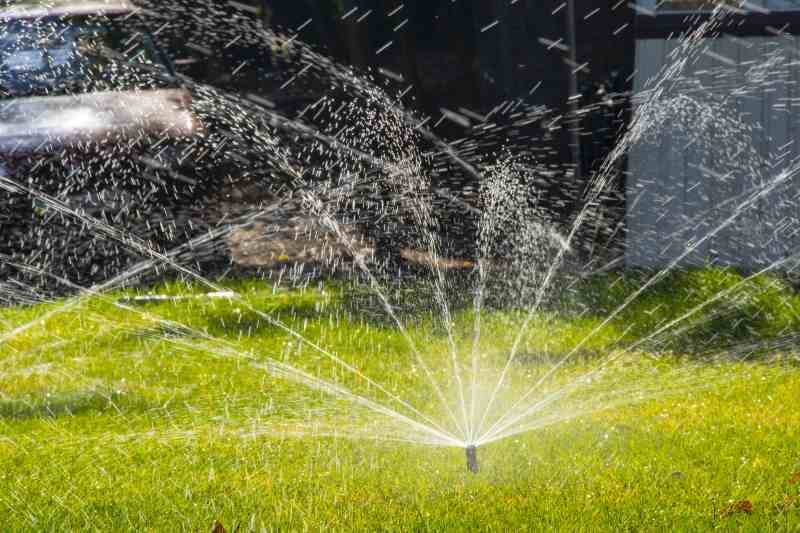
All the care you give your lawn can be in vain if it doesn’t get enough water. Charleston summers can reach the low to mid-80s degrees F, and coupled with bouts of dry weather, this could take a toll on your grass. Our lawns need regular watering to stay hydrated during these months.
Grass tells its own stories. If you notice that fresh footprints remain longer than usual, it can mean that your lawn needs some water. Early mornings are the best time for watering your grass since evaporation rates are lower. Water deeply and infrequently, aiming for 1 to 1.5 inches per week.
Fall Lawn Care: September to November
Fall is all about preparing for the much-awaited winter rest, but before you put your feet up and relax, make sure that your lawn will survive its long slumber.
Overseed — September
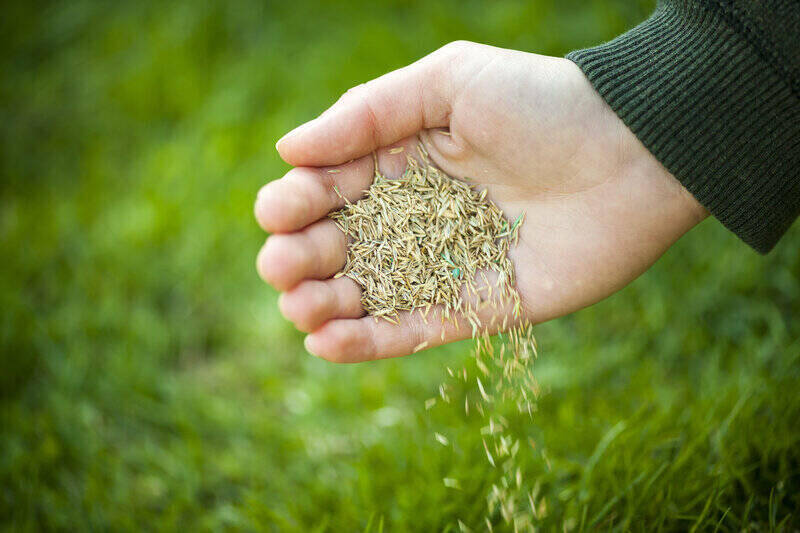
Fall’s cooler temperatures and regular rainfall provide perfect conditions for grass seed germination, making September the ideal time to overseed your cool-season grass. Remember that bare spots are neat little invites for weeds in the spring.
All you have to do is mow the existing grass short, loosen the topsoil in the bare spots, spread a grass seed that matches your current lawn, and keep it watered until new grass starts to grow.
Fertilization — Early September to October
Once the overseeding process is complete and new grass begins to grow, it’s time to fertilize your lawn. The goal here is not to overstimulate your cool-season grass with too much nitrogen, as this could increase the risk of diseases.
Pick a good slow-release fertilizer that also includes other nutrients such as potassium and phosphorus. Apply this around early September or October as soon as the hottest days are over. For more information, see our article on How to Choose the Right Lawn Fertilizer.
Rake and Clear Leaves — Throughout Fall
Your lawn can’t get any sunlight or air if it’s literally buried under a layer of autumn leaves. Moreover, the soggy mat of dead foliage can breed disease and invite pests. Be meticulous about raking those leaves up as fall sets in. A solid rake and some elbow grease should do the job, or you can use a lawn mower with a bagger to collect them.
On the other hand, don’t rush to eliminate every single leaf that falls on your yard. If you have a thin layer across your grass, improving your lawn with mulch could be an ideal solution. The natural course of decomposition over the winter will help return essential organic matter back into the soil as these shredded leaves break down.
Continue Mowing — September to October
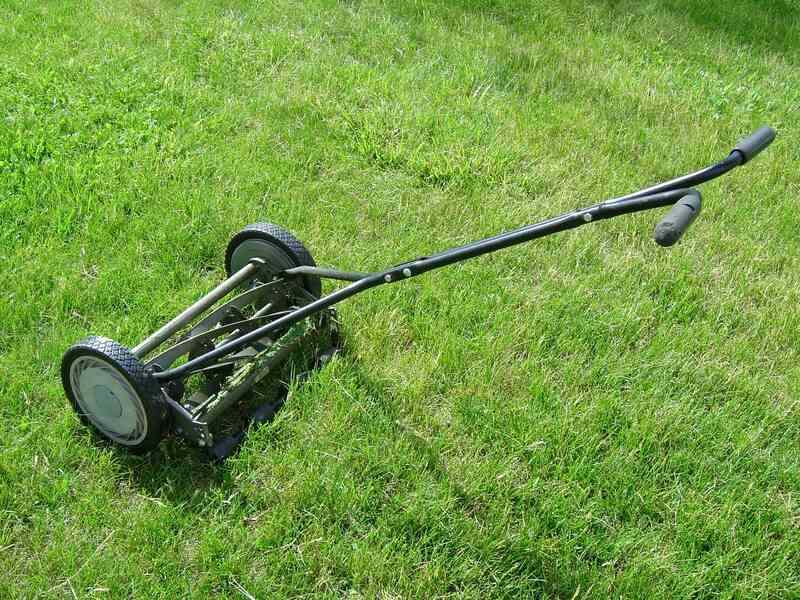
It’s important not to shelve your lawn mower too soon. Grass doesn’t exactly stop growing until the first major frost, which could be as late as November in Charleston. You’ll want to keep up with mowing duties through fall.
As grass growth slows down by early October, raise the mowing height. Try to target a good mow every seven days in September, and as growth slows further, you can stretch out your mowing sessions to every 10 to 14 days.
Prep For Final Mow — Mid to Late October
As we inch closer towards the end of fall, keep an eye on what the grass is doing. Depending on weather patterns, your last mow of the year will likely be around mid to late October.
Unlike summer mows, this round should be relatively short, around two inches, so that no blades are left long enough to flop over and cause any disease.
Clean and Winterize Your Mower — After Last Cut
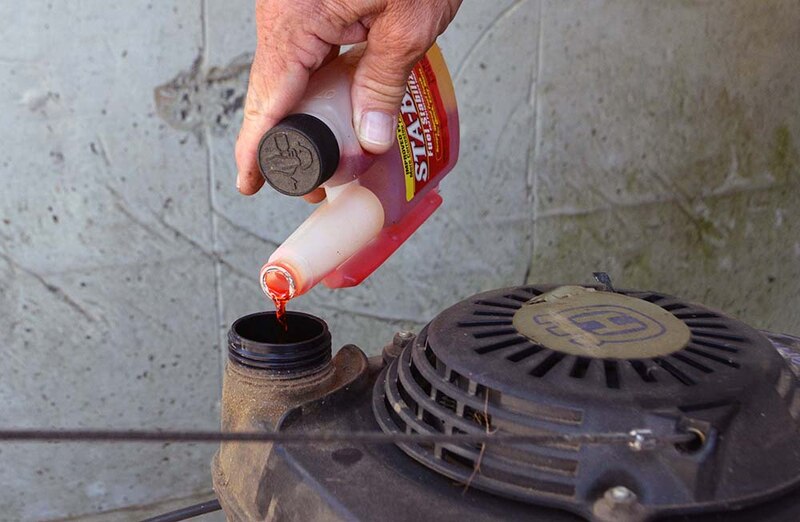
Photo Credit: Derek Lacey
Now that your lawn is ready for its winter rest, it’s time to give your lawn mower some downtime. A good maintenance session after the last cut can greatly increase the life of your mower. Here is your lawn mower winterization checklist:
- Empty out remaining fuel: Gasoline left behind in a sitting mower can corrode or cause damage.
- Clean undercarriage: To clean the underside of the lawn mower, use wire brushes and water to remove all dried, stuck-on grass clippings, as this could cause rust.
- Lubricate moving parts: Keep mower blades sharp and use quality oil on joints and motor parts if necessary. Now is also a good opportunity to replace any worn-out air filters or spark plugs.
Perform Final Fall Cleanup — November
After the last mow, go through your lawn one more time and carry out a full clean-up. Clear any remaining leaves or other debris, and make sure no outdoor furniture or large objects will be left to smother patches of grass over the winter.
Late fall or winter is also the best time to trim and prune trees, as the trees have gone dormant and the fallen leaves now expose branches and limbs. Trim them back to prevent any breakage under heavy snowfall or winter winds.
Winter: December to February
Winter is the time when your lawn goes dormant. However, that doesn’t mean you should completely ignore it during these colder months.
Avoid Foot Traffic — All Winter
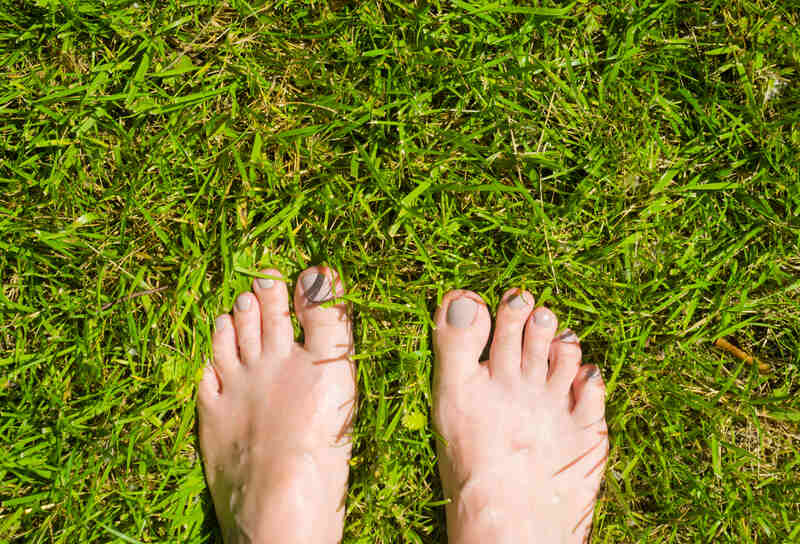
While you might savor the view of your lawn covered with snow, avoid walking or running over it as much as possible. The grass blades are dormant during this season and can break easily when pressure is applied. This will result in weak spots or even bare patches when spring comes again.
Avoid Using Ice Melts Near Lawns — All Winter
Common ice melts containing de-icers like rock salt can prevent icy walkways but at the cost of potentially damaging your lawn.
To maintain safer sidewalks during winter while reducing plant damage from road rock salt, opt for eco-friendly alternatives such as calcium magnesium acetate (CMA).
Start Planning For Spring — From February
As we approach the end of winter, it’s time to start thinking about spring lawn care. Once the snow melts, take a walk around your yard and have a look at the state of things. Are there any areas that don’t seem to be faring well? Do you see some moss growth or yellowing?
FAQ About Charleston Lawn Care
What Are the Most Common Lawn Weeds in Charleston?
Charleston shares many of the common weeds found across West Virginia. These include dandelions, crabgrass, clover, and chickweed. Remember to apply a pre-emergent herbicide in the spring to prevent weed seeds from germinating and follow up with a post-emergent one to kill any leftover weeds.
What Kind of Grass Grows Best in Charleston, WV?
In Charleston’s climate, cool-season grasses such as Kentucky bluegrass, fine fescue, tall fescue, and perennial ryegrass are great options since they thrive in colder temperatures.
You can also look into West Virginia native grass types. They are already adapted to the varied weather patterns and soil types. Here are some options:
- Switchgrass: If you live in an area where the road salts stray onto your lawn or there’s a lot of water runoff, switchgrass could be a good option. This native ornamental grass is extremely tolerant to flooding and salinity.
- Big bluestem: An aggressive grower with deep roots, it’s excellent if you’re dealing with soil erosion. It’s also pretty tough when it comes to drought and cold weather.
- Indiangrass: Adaptable to various conditions, Indiangrass grows tall with golden seeds that birds love.
Does Dethatching Damage Grass?
While dethatching can initially damage the lawn, leaving you with a space that may seem half bare, it ultimately helps your grass. It encourages healthier growth. You might notice yellow patches of grass immediately after dethatching, as some healthy grass may get uprooted in the process.
Contact a Pro for Every Seasonal Lawn Task
Your lawn is a living, thriving part of your home and needs to be given the right care year-round. While Charleston’s changing seasons can present challenges for your yard work, following a solid seasonal schedule can make things simpler.
LawnStarter connects you with local lawn care pros who can help you establish and maintain a healthy lawn in Charleston throughout the year.
Main Image Credit: CRAWFORD-GARDNER HOUSE / Jerrye & Roy Klotz, MD / Wikimedia Commons / CC BY-SA 4.0 created using Infogram